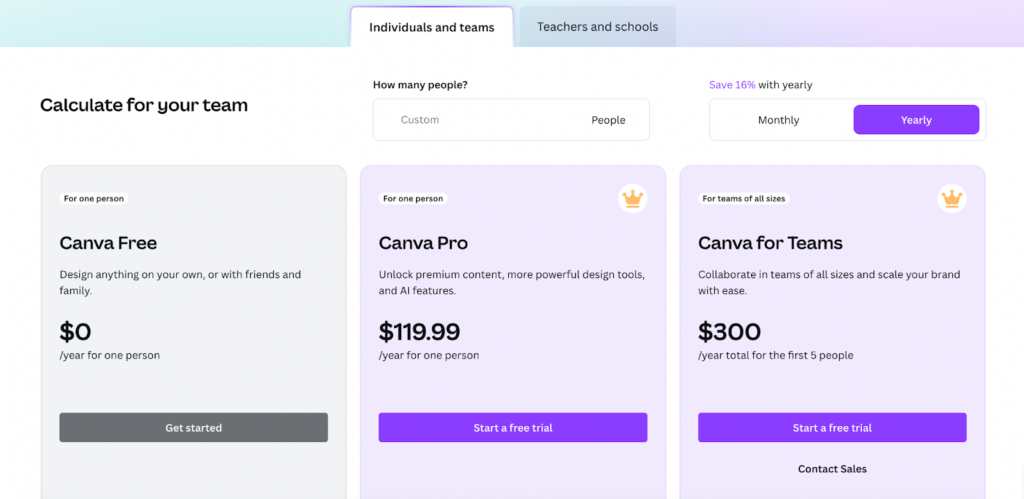What is Price Positioning?
Price positioning refers to the strategic method businesses use to set the prices of their products or services in relation to their competitors.
The price of a product or service refers to how much buyers are willing to pay for it. If a business is the only player in the market, it might get away with an expensive price if it is the only player in the market. However, recent reports indicate that people are moving towards cheaper products because of high inflation.
Price plays a significant role in shaping consumer perceptions, influencing purchasing decisions, and ultimately, determining the success of a product or service in the market.

MORE: What is price anchoring?
How Price Positioning Works
Price positioning involves creating an appealing pricing proposition that competitors providing the same value can’t match. To get it right, you must consider the following:
- How your price fits the market,
- How it aligns with your brand,
- The target audience,
- Your revenue objectives.
For example, this approach makes two software programs that do almost the same things have different prices. That applies, whether it is project management software, CRM, email marketing, remote desktop, accounting, etc.
The importance of price positioning for any SaaS business includes the following:
- It impacts profit margins,
- It brings a competitive advantage,
- It justifies the value of your product to your customers.
This strategy begins internally and extends to customers, aiming to provide value without selling below production costs. For subscription-based products, operational costs must be covered across billing cycles.
Thorough research beyond customer interactions, such as understanding market share, helps inform pricing strategies for market entry.
MORE: How do trial pricing strategy work?
Pros and Cons of Price Positioning
This approach is not all fair and square. It can have some unwanted effects on your business and the general market.
The following table shows the pros and cons of price positioning:
| Pros of Price Positioning | Cons of Price Positioning |
|---|---|
| Price positioning helps to differentiate the product. | This has risk of devaluing product if priced too low. |
| This can attract price-sensitive customers. | Pricing a product too low may lead to the perception that it lacks quality or exclusivity, potentially alienating high-end customers who value prestige and luxury. |
| This is effective for market penetration strategies. | Price wars can result from competitors trying to undercut one another through price positioning strategies, which can drive down prices and profit margins.. |
| It helps to provide clear market positioning. | This method requires thorough market research and analysis |
Factors Influencing Price Positioning
As mentioned, your considerations for price and positioning in the market must begin in-house. Then, you can move on to the customers and competitors. This approach is crucial to incorporating business costs and market perceptions into your prices.
Price positioning differs from pricing models. The latter refers to the format in which companies charge customers for their products. For example, one company may have a flat rate for all users, while another has a tiered system with different prices.
Positioning your product price is not a one-time event. It might involve several tests or simulations of market reactions. For example, you should first test how the market will react to a $5 increase.
The factors influencing price positioning include the following:
Production and Running Costs
Production cost analysis is the primary determinant of a product’s final price to ensure profitability and business sustainability.
Ongoing expenses such as customer support, updates to improve quality and resolve bugs, new version releases, and more add to the software’s running costs beyond initial production. Nonetheless, these anticipated costs must be considered when determining the product’s price.
Market Demand
There’s no logic in charging a premium price if your product is in low demand. You will have less demand and ultimately run at a loss compared to other lower-priced competitors. Hence, a competitive pricing approach becomes essential in this scenario.
You can get away with premium pricing for your product if there is high demand and less competition. Of course, your quality must match the price to ensure customers get what they pay for.
Market demand can be assessed through statistical analysis, such as examining industry market capitalization, or through surveys, with secondary data being a cost-effective alternative if primary research is too expensive.
MORE: What is prestige pricing?
Competition
Offering a better product at a lower cost is a common strategy for outperforming the competition, which demands thorough competitor analysis.
This goes beyond just setting prices according to what the customer wants. Justifying your product’s positioning as a more affordable option necessitates taking into account additional benefits and brand perception, particularly in crowded markets.
Market Segmentation
In a segmented market, tailored pricing strategies are key. Consider different price positions for distinct customer segments, such as students, early professionals, and team solutions, as seen in software pricing for personal, family, and business use.
Even if competitors use a flat rate, competition and market research can uncover segmentation opportunities for you to exploit.

Brand Image and Perception
This factor is easier for established businesses to deal with. They already have a brand image and perceived market value. Hence, they can quickly match that with their price positions.
Conversely, startups and new businesses may struggle with their initial position in the market. Hence, they often begin with low pricing. They might increase their prices as their brand image or perception increases.
In today’s age of artificial intelligence, it is easy for Microsoft to charge a premium for Copilot in its Office 365 apps. Even so, the company must still maintain strategic pricing. A new startup cannot jump on artificial intelligence and charge a premium when people barely know it.
Consider your credibility when positioning your market price. Then, you can make subtle increments to reflect new economic realities and credibility heights.
Price Positioning Strategies
The factors in the previous section will determine which strategy suits your business most. With that in mind, here are the price positioning strategies you can use:
These strategies are ideal for companies in different growth phases. For example, a startup will focus more on setting a price to penetrate the market. It can still use the cost-plus pricing strategy, but its price must not be too high for market penetration.
More established companies can price more competitively or focus on their products’ values. Using a value-based approach might result in a higher price than competitors.
MORE: What is pricing strategy?
Takeaway Points
Price positioning is crucial to SaaS companies. It involves finding the optimal price that attracts new customers, retains customers, increase brand image, and make a profit.
Price your products based on value, operational costs, market demand, and competition, adapt pricing models to service/product delivery, and utilize primary market research, with secondary data as a cost-efficient alternative when necessary.
Visit SaaSGenius to learn more software solutions, hacks, and business advice that will help you not only properly implement your pricing strategy but also improve the performance of your company.
Related Posts
Frequently Asked Questions (FAQ)
Author
Methodology
- Who?
We are SaaS experts: Our specialists constantly seek the most relevant information to help support your SaaS business. - Why?
We are passionate about users accessing fair SaaS pricing: We offer up-to-date pricing data, reviews, new tools, blogs and research to help you make informed SaaS pricing decisions. - How?
With accurate information: Our website manager tests each software to add a Genius Score using our rating methodology to each product. Our editorial team fact-check every piece of content we publish, and we use first-hand testing, value metrics and leading market data.










